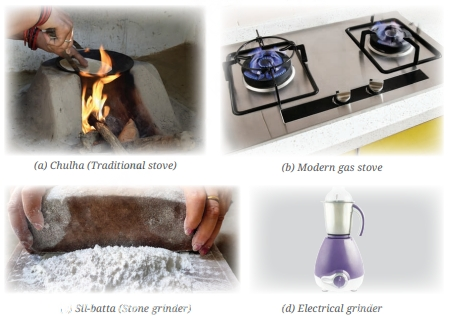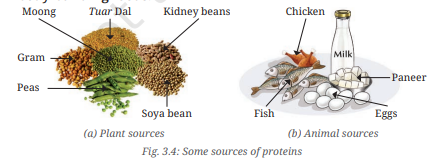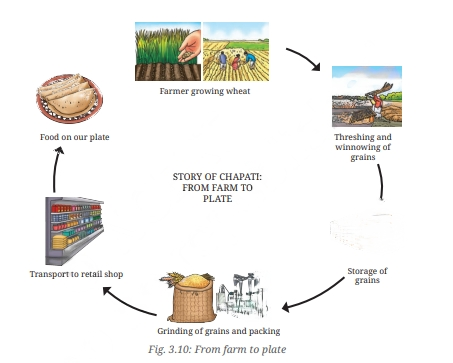Mindful Eating: A Path to a Healthy Body – Complete Guide For Class 6 Science Chapter 3
Welcome to iPrep, your Learning Super App. Our learning resources for the chapter, Mindful Eating: A Path to a Healthy Body in Science for Class 6th are designed to ensure that you grasp this concept with clarity and perfection. Whether studying for an upcoming exam or strengthening your concepts, our engaging animated videos, practice questions and notes offer you the best-integrated learning with interesting explanations and examples.
Objectives of Learning Mindful Eating
Mindful eating is more than choosing healthy foods; it’s a holistic approach that encourages awareness of our eating habits. By practicing mindful eating, students will learn to appreciate the origins of their food, recognize the importance of balance and variety in their diet, and understand how their choices impact their health and the environment. This chapter aims to equip students with the knowledge and skills to make informed food choices, fostering lifelong habits that promote well-being. Through engaging activities and discussions, we will explore how mindful eating contributes to a healthier body and a sustainable future.
Who is Healthy?
A well-known saying from ancient wisdom asks, “Who is healthy?” The answer lies in consuming food that is wholesome, moderate in quantity, and suitable for the season, time, and place. This sets the foundation for understanding how mindful eating contributes to a healthy body.
What Do We Eat?
Food is an essential component of our daily life. It not only nourishes our bodies but also reflects the diverse cultures across the country.
Activity: Let Us Record Our Food
Students are encouraged to track their food intake over a week and note the variety of items consumed. This exercise leads to questions like:
- Do we eat the same kind of food every day?
- What similarities and differences exist between our diet and our friends’ diets?
These observations help us understand the diversity in food choices across various states.
Food in Different Regions
India is a land of cultural diversity, which is reflected in its food habits. Each state has traditional foods based on locally grown crops.
Activity: Exploring Food Diversity
Students are encouraged to explore the food habits in different regions of India. For instance, in Punjab, traditional foods include makki di roti and sarson da saag, while Karnataka is known for idli, dosa, and sambhar.
State Crops Grown Traditional Food Beverages Punjab Maize, wheat, pulses Makki di roti, sarson da saag Lassi, buttermilk Karnataka Rice, ragi, urad Idli, dosa, sambhar, ragi mudde Coffee, tea Manipur Rice, bamboo, soybean Rice, eromba, singju, kangsoi Black tea
How Cooking Practices Have Changed Over Time
Food preparation methods have evolved with time. From traditional chulhas to modern gas stoves, cooking practices have undergone a significant transformation.
Activity: Interviewing the Elderly
Students are encouraged to interview elderly people and learn how cooking methods and food habits have changed over the years. For example, earlier grinding was done using a sil-batta, but today, electric grinders have replaced it.
Traditional Tool Modern Tool Chulha (stove) Gas stove Sil-batta (grinder) Electrical grinder 
What Are the Components of Food?
Food consists of several components, each serving a specific purpose for the body. These include carbohydrates, fats, proteins, vitamins, and minerals.
Carbohydrates and Fats: Energy-Giving Foods
Carbohydrates are essential for energy, and common sources include wheat, rice, potatoes, and fruits like bananas and mangoes. Fats provide stored energy, with sources such as nuts, seeds, butter, and oils.
Sources of Carbohydrates Sources of Fats Wheat, rice, potatoes Nuts, butter, oils

Proteins: Body-Building Foods
Proteins help in growth and repair. Plant-based sources include pulses, beans, and nuts, while animal-based sources include milk, eggs, fish, and meat.
Plant Sources Animal Sources Pulses, beans, nuts Milk, eggs, meat 
Nutrients That Protect Our Body
Vitamins and minerals protect the body from diseases. For example, vitamin C prevents scurvy, while iodine prevents goiter.

Nutrients are essential components of food that provide energy, support growth, aid in body repair, and protect us from diseases. The major nutrients include carbohydrates, proteins, fats, vitamins, and minerals. Vitamins and minerals, known as protective nutrients, are crucial for maintaining health, despite being required in small amounts. They are found in foods like milk, vegetables, fruits, and whole grains. Cooking can cause some nutrient loss, such as vitamin C, making it beneficial to include raw fruits and vegetables in our diet.
Dietary fibers, or roughage, aid digestion by helping the body eliminate undigested food, while water assists in nutrient absorption and waste removal. A balanced diet rich in local, plant-based foods, combined with sufficient water intake, is vital for maintaining health and benefiting the environment.
Balanced Diet: A Key to Healthy Living
A balanced diet contains all the essential nutrients in the right amounts. It varies according to age, gender, and activity levels.
Activity: Checking for a Balanced Diet
Students are asked to evaluate their weekly food consumption and determine whether it contains all necessary nutrients. A balanced diet should include carbohydrates, proteins, fats, vitamins, minerals, roughage, and water.
Between potato wafers and roasted chana, the potato wafers can be labeled as junk food. Potato wafers have high calories due to their sugar and fat content but contain low amounts of essential nutrients like proteins, vitamins, minerals, and dietary fibers. Frequent consumption of such foods can lead to obesity and various health issues. In contrast, roasted chana is a healthier option as it is rich in proteins and other nutrients. Eating a balanced diet, avoiding junk food, and choosing nutrient-rich options like roasted chana is important for maintaining good health, as health is essential for a happy life.
Testing Food for Nutrients
Certain nutrients in food, like starch, fats, and proteins, can be detected using simple tests.
Food Item Starch Test Fat Test Protein Test Potato Yes No No Peanuts Yes Yes Yes
In the investigation of food items for nutrients, the test for starch involves applying an iodine solution to various foods like potatoes, bread, and rice. A blue-black color indicates the presence of starch. The fats test requires wrapping food in paper and pressing it. An oily patch on the paper shows the presence of fats, as seen in foods like butter or oil. For proteins, food is mixed with copper sulfate and caustic soda in a test tube. A violet color signifies the presence of proteins, as found in foods like peanuts.
These tests show that many foods contain multiple nutrients, such as peanuts, which have both proteins and fats. This highlights the diversity of nutrients in everyday foods, helping us understand their contribution to a balanced diet.
Millets: Nutrition-Rich Cereals
Millets like jowar, bajra, and ragi are rich in nutrients and have been part of the Indian diet for centuries. They are excellent sources of vitamins, minerals, and dietary fiber.
Food Miles: From Farm to Plate
Food miles refer to the distance food travels from the farm to our plate. Reducing food miles helps lower pollution and supports local farmers.

Let’s Conclude
The journey to a healthy body begins with mindful eating. Consuming a balanced diet, incorporating traditional foods like millet, and reducing food wastage are essential steps toward achieving good health. By understanding where our food comes from and making conscious choices, we can lead a healthier, more sustainable lifestyle.
In summary, Mindful Eating: A Path to a Healthy Body emphasizes the crucial role that our food choices play in our overall health. By engaging with the concepts presented in CBSE Class 6th Science Chapter 3 – Mindful Eating: A Path to a Healthy Body, we learn the importance of consuming a balanced diet rich in essential nutrients. Reflecting on our food habits, understanding regional cuisines, and recognizing the nutritional value of diverse food items are vital for promoting wellness.
As we continue our journey through this chapter, let’s commit to making mindful choices that foster a healthier body and contribute to our happiness. Remember, every meal is an opportunity to nourish ourselves—let’s make it count!
Practice questions on Chapter 3- Mindful Eating: A Path to a Healthy Body
Get your free Chapter 3- Mindful Eating: A Path to a Healthy Body practice quiz of 20+ questions & detailed solutions
Practice Now








